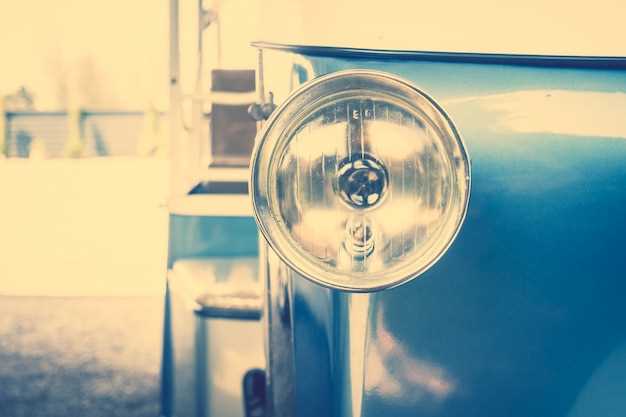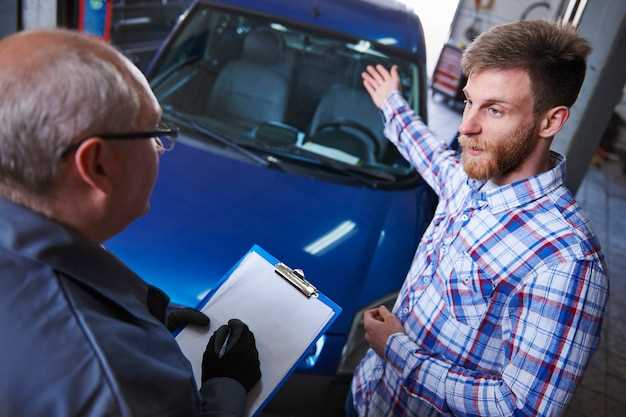
When it comes to insuring custom classic vehicles, understanding the unique requirements and challenges is crucial for every enthusiast and collector. This report aims to provide a comprehensive summary of key insurance insights specifically tailored for this niche market. The classic car community is passionate, and the vehicles themselves often carry not only significant financial value but also sentimental worth.
Custom classic vehicles present distinct considerations that standard auto insurance policies may not adequately cover. Factors such as modifications, unique features, and historical significance all play a vital role in determining the appropriate coverage options. Collectors must be aware of these variables to ensure that their investment is well protected and to avoid common pitfalls associated with inadequate insurance.
In this article, we will explore the critical aspects of insuring custom classic vehicles, including recommended coverage types, valuation methods, and tips for finding specialized insurance providers. By understanding these essential elements, vehicle owners can make informed decisions that safeguard their treasured automobiles for years to come.
Understanding Coverage Options for Modified Classic Cars

Modified classic cars represent a unique blend of nostalgia and modern engineering. Securing insurance for these vehicles involves understanding the specific coverage options available to account for various modifications. When considering a policy for a modified classic car, one must be aware of how each modification can impact insurance needs.
Standard Coverage vs. Specialty Coverage
Most traditional car insurance policies may not adequately cover modified classic vehicles. A summary of coverage options reveals that specialty insurance is often recommended. This type of insurance caters specifically to vehicles with custom modifications, providing protection that aligns with the vehicle’s true value and modifications.
Modification Impact on Coverage
Insurance providers usually assess the type and extent of modifications made to a classic car. Common modifications include performance enhancements, custom paint jobs, and alterations to the vehicle’s interior. Each of these changes can affect the car’s value and, consequently, the insurance premium. A detailed report of the modifications is often required, including specifications and photographs, to ensure accurate coverage assessment.
Agreed Value vs. Actual Cash Value
One of the crucial decisions when insuring a modified classic car is choosing between agreed value and actual cash value coverage. Agreed value policies pay a pre-determined amount in the event of a total loss, acknowledging the vehicle’s modified state and potential appreciation. Conversely, actual cash value policies consider depreciation, which may not fairly compensate for the vehicle’s enhancements.
Documenting Modifications
Proper documentation of modifications not only ensures that the vehicle is accurately valued but also helps expedite claims processes. Insurers favor detailed records, including receipts and descriptions, as they play a pivotal role in substantiating the vehicle’s enhanced worth during claims assessments.
In summary, understanding coverage options for modified classic cars involves recognizing the importance of specialty insurance, evaluating the implications of modifications, and maintaining comprehensive documentation. By taking these factors into account, owners can secure appropriate coverage that protects their investment while enjoying their unique vehicles on the road.
Assessing the Value of Custom Classic Vehicles for Insurance Purposes
Determining the value of custom classic vehicles is crucial for insurance purposes. An accurate valuation ensures that vehicle owners receive appropriate coverage and compensation in case of loss or damage. The process typically involves several key steps that provide a comprehensive report of the vehicle’s worth.
First, owners should compile a summary of the vehicle’s unique modifications and enhancements. This includes custom paint jobs, engine upgrades, and interior improvements. Each modification can significantly affect the overall value, influencing the insurance premiums and coverage options.
Next, gathering documentation is essential. Receipts, appraisals, and photos can serve as evidence of the vehicle’s condition and enhancements. Having a well-documented history not only aids in the valuation process but also simplifies claims should they arise.
Professional appraisals are highly recommended for custom classic vehicles. Experts in the field can provide an objective assessment based on current market trends, comparable sales data, and the vehicle’s historical significance. This independent valuation plays a critical role in determining the appropriate insurance coverage.
Lastly, owners should regularly reassess their vehicle’s value. Changes in market conditions, modifications, or restorations can impact worth over time. Regular updates to the insurance policy help ensure that the coverage remains adequate, protecting against potential financial losses.
Navigating Claims for Modifications in Classic Vehicle Insurance

When insuring custom classic vehicles, understanding how modifications impact your policy is crucial. Modifications, whether aesthetic or performance-related, can affect the coverage you receive and the claims process. It’s important to report any changes made to the vehicle to your insurance provider to ensure adequate protection.
Upon making modifications, it is advisable to create a detailed summary of the enhancements. This should include descriptions of the changes, associated costs, and photographs showcasing the modifications. Such documentation will not only support your claim should an incident occur but also help in adjusting your premium accordingly.
In the event of a claim related to a modification, the first step involves notifying your insurer. Provide them with all necessary information, including your detailed report of modifications. Be prepared for potential adjustments in coverage; some modifications may increase the value of the vehicle or require specific endorsements to your existing policy.
Understanding your insurance policy’s terms regarding modifications is essential. Some companies offer specialized custom vehicle insurance that accommodates modifications better than standard policies. Always read the fine print and ensure that your modifications are covered to avoid complications during the claims process.
In summary, navigating claims for modifications in classic vehicle insurance requires proactive communication with your insurer. Maintain thorough documentation of all changes and review your policy options to ensure your classic vehicle is properly protected.




